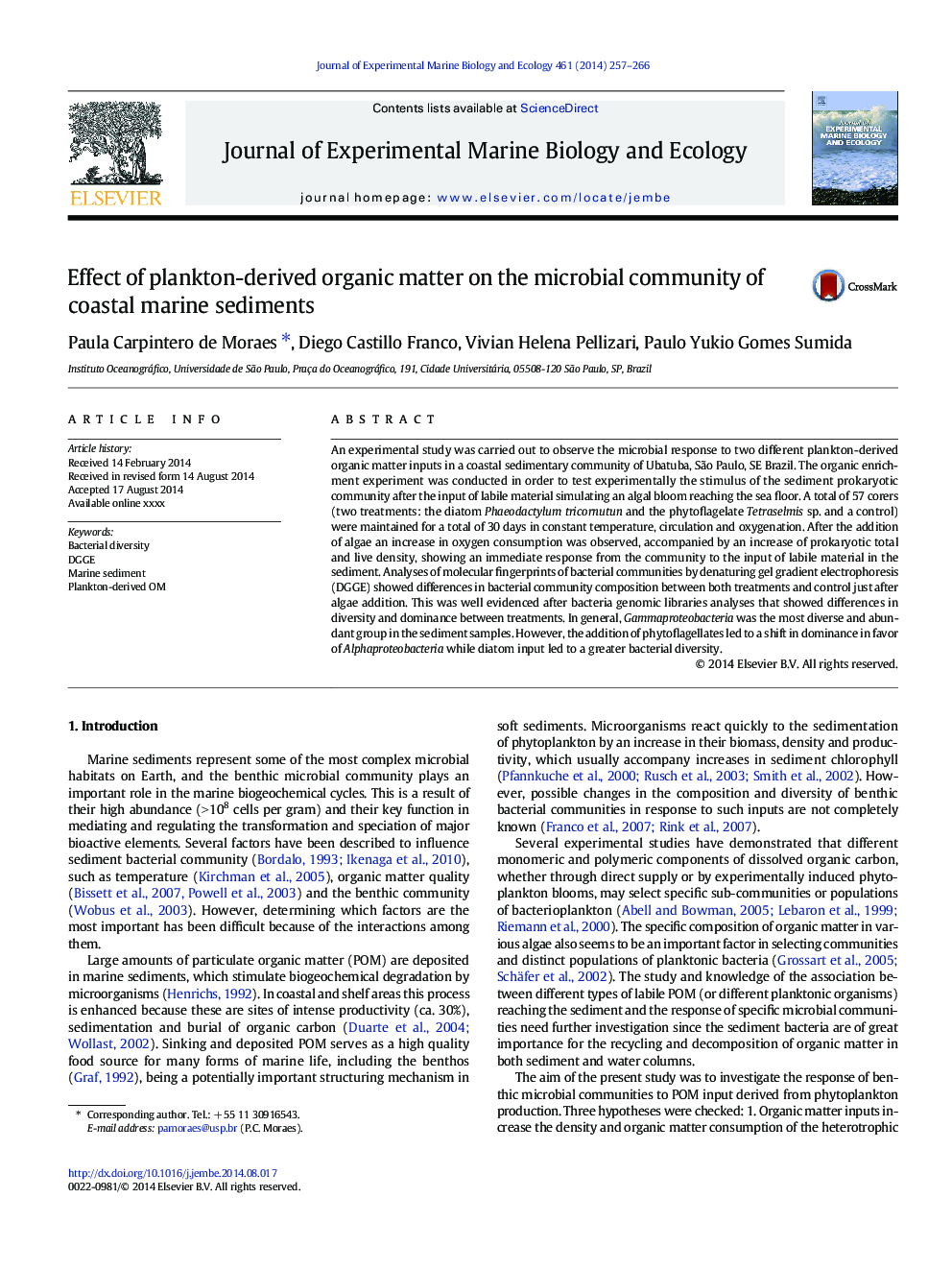| Article ID | Journal | Published Year | Pages | File Type |
|---|---|---|---|---|
| 6303953 | Journal of Experimental Marine Biology and Ecology | 2014 | 10 Pages |
Abstract
An experimental study was carried out to observe the microbial response to two different plankton-derived organic matter inputs in a coastal sedimentary community of Ubatuba, São Paulo, SE Brazil. The organic enrichment experiment was conducted in order to test experimentally the stimulus of the sediment prokaryotic community after the input of labile material simulating an algal bloom reaching the sea floor. A total of 57 corers (two treatments: the diatom Phaeodactylum tricornutun and the phytoflagelate Tetraselmis sp. and a control) were maintained for a total of 30 days in constant temperature, circulation and oxygenation. After the addition of algae an increase in oxygen consumption was observed, accompanied by an increase of prokaryotic total and live density, showing an immediate response from the community to the input of labile material in the sediment. Analyses of molecular fingerprints of bacterial communities by denaturing gel gradient electrophoresis (DGGE) showed differences in bacterial community composition between both treatments and control just after algae addition. This was well evidenced after bacteria genomic libraries analyses that showed differences in diversity and dominance between treatments. In general, Gammaproteobacteria was the most diverse and abundant group in the sediment samples. However, the addition of phytoflagellates led to a shift in dominance in favor of Alphaproteobacteria while diatom input led to a greater bacterial diversity.
Related Topics
Life Sciences
Agricultural and Biological Sciences
Aquatic Science
Authors
Paula Carpintero de Moraes, Diego Castillo Franco, Vivian Helena Pellizari, Paulo Yukio Gomes Sumida,
